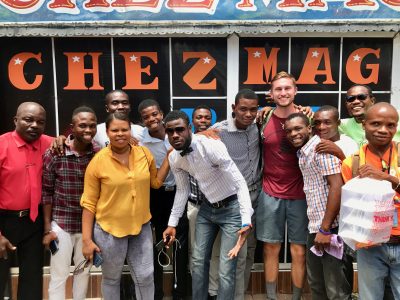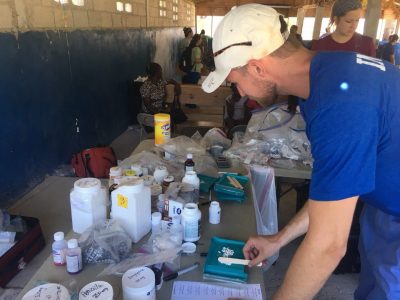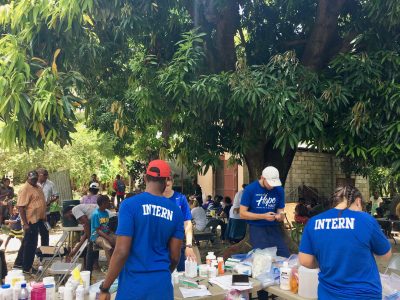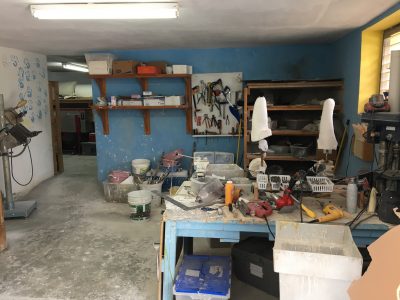Brandon Moritz is a biomedical engineering student at the University of Arkansas. During the summer of 2017, he spent three months as a Medical Intern with Mission of Hope, Haiti. Below, he describes the experience and discusses what he learned:
This past summer I had the opportunity to live and serve in Haiti for three months. I was hired as a Medical Intern with Mission of Hope, Haiti to assist with operations and execution of their healthcare system in the region. Along with other Medical Interns and our Mobile Medical Clinic Director, Lauren Raschke, we led doctors, nurses, and other healthcare professionals from all over North America in providing healthcare to 18 different villages in our region of Haiti. We saw 5,400 people in the region through mobile clinics alone during my time there.
I also was able to use my biomedical engineering knowledge to assist our Haitian prosthetist in the Prosthetics of Hope lab. Some men and women came in who still hadn’t walked since the devastating earthquake that occurred back in 2010 that cost them their leg, but some of my most rewarding work came from seeing people who hadn’t walked in years be able to take their first steps without the assistance of a crutch for the first time.
My favorite portion of my job was Medical Outreach. While I loved getting to go all over Haiti to lead mobile clinics in various churches or under giant mango trees, it was not the same as being invited into a community member’s home to build relationships, treat the sick, and provide hope to the hopeless. During those visits, I built friendships and memories that would last a lifetime and that have impacted how I view medicine.
The patient that impacted me the most was a man named Franckel. Franckel was a paraplegic, middle-aged man who lived in Minoterie, a coastal village north of Port au Prince (PAP). Franckel was working in PAP a few years ago when a fight broke out between some individuals across the street. A gun was pulled and the bullet that was shot, intended for someone else, hit Franckel. From that point on, Franckel was paralyzed from the waist down.
I first met Franckel about two years later in his concrete block home in Minoterie. He had a loving, radiant wife named Mary. That day I provided wound care to Franckel’s unstageable pressure ulcers. Franckel’s body was weak from fighting a constant infection, but his morale was suffering the most. Life had dealt him a hand out of a deck of cards that was not stacked in his favor, and he was suffering because of it. Franckel had not sat up in many months when I met him, and it was very hard to bring a smile to his face. He was close to being defeated.
While the summer had its ups and downs for Franckel’s health and morale, we accomplished much while there. We were able to use silver ion enhanced gauze pads that were donated to provide more effective treatment for his ulcers. We installed a trapeze bar above Franckel’s bed, so he could gain strength in his upper body, in hopes of becoming self-sufficient. We were able to provide Franckel with a new mattress, nutritious food, household items, and teach Mary how to provide quality wound care. Over the months of spending time with him, I became more than just a healthcare provider to Franckel. Franckel started to only call me Zanmi, which is an endearing term that means friend.
On the last day I spent with Franckel, we arrived in our car to find him sitting on his front porch in his wheelchair with his wife, Mary, who was holding his baby grandson. For a man who hadn’t sat up in his bed since the shooting and hadn’t left his house in years, unless it was in the back of an ambulance, this was an incredible feat. With tears of joy in everyone’s eyes, I said my farewells to Franckel. Franckel had found hope, and I got the blessing of being a part of it.
– Brandon Moritz




